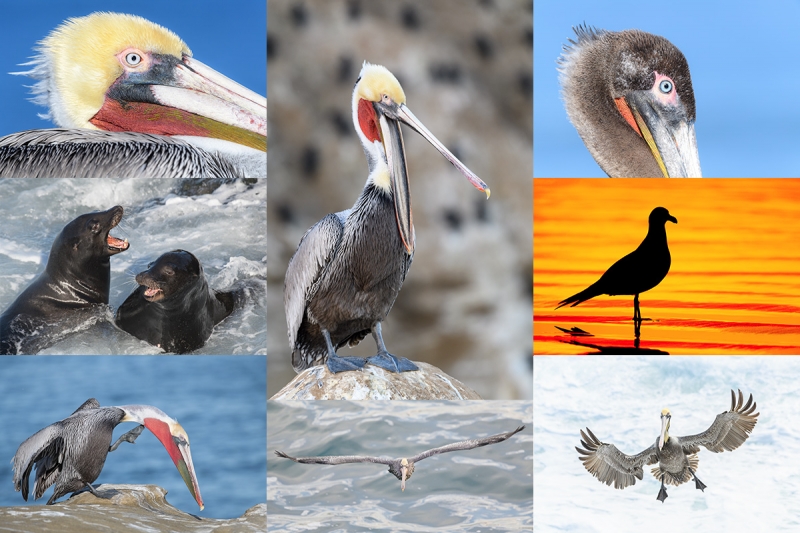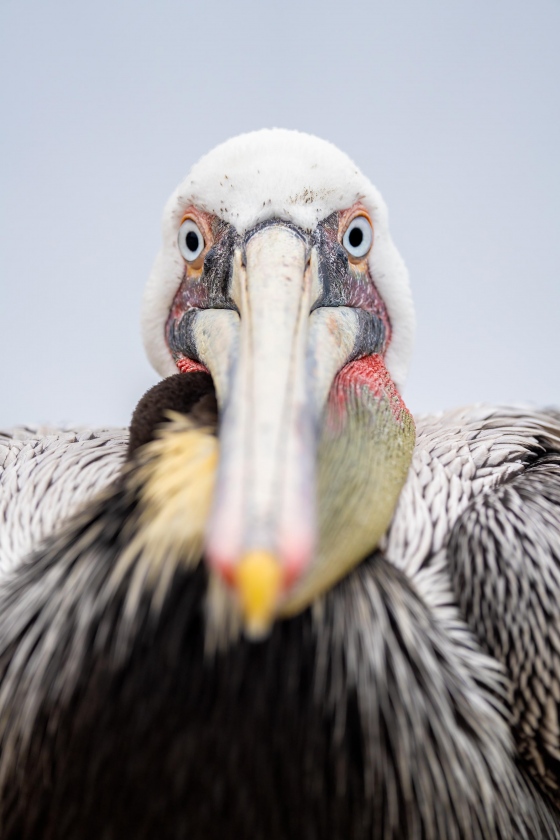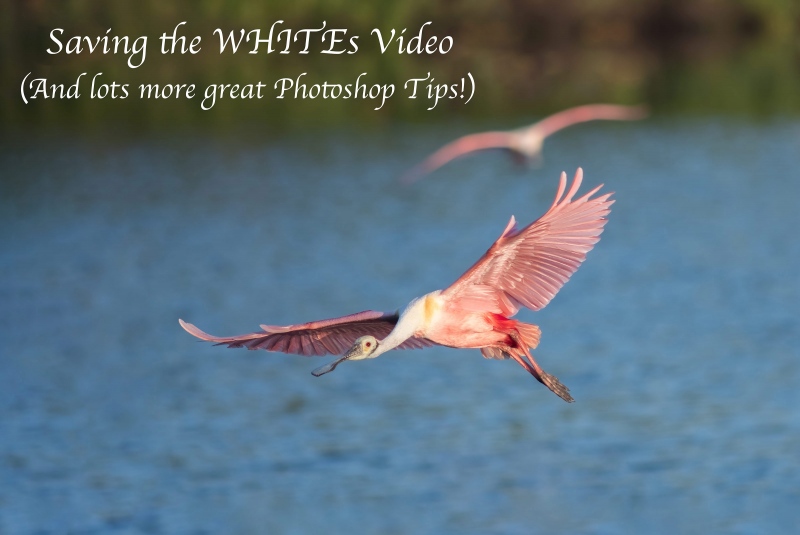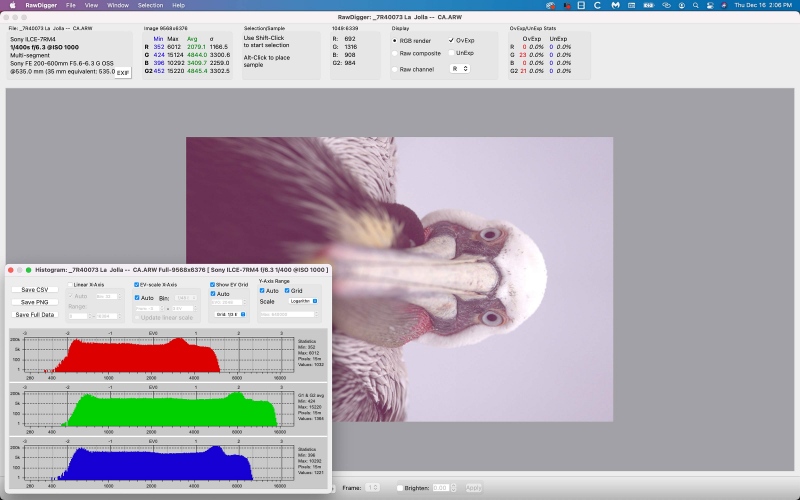Sony FE 100-400mm, F4.5-5.6GM OSS Lens
BIRDS AS ART Record Low Price
Sale Pending
Yours truly, Arthur Morris, is offering a Sony FE 100-400mm f/4.5-5.6G M OSS lens in like-new condition for a BAA record-low $1297.00. The sale includes the original box, the front and rear lens caps, the lens case, and insured shipping via United Parcel Service Ground. Your item will not ship until your check clears unless other arrangements are made. Use PayPal plus 4% to ensure quick shipping.
Please contact artie via e-mail on try me on my cell at 863-221-2372 (Eastern time zone/early to bed). Please leave a message and shoot me a text if I do not pick up.
This versatile, mega-close-focusing lens is easily hand holdable by most folks; at 3.08 lbs, it is more than 50% lighter than the 200-600 G lens (4.65 lbs). It is great for bird photography. I use mine often for flight photography, for head shots of silly-tame birds, and for large flowers, butterflies, frogs, and the like. It sells new for $2498.00 so you can save a handsome $1,1000.00 by grabbing my lens today; it is priced to sell!. Do understand that the zoom mechanism on this lens is on the stiff side. artie
What’s Up?
Thursday morning was great. Thursday night was fair despite excellent conditions. The wading birds were starting to fly into the roost with some color in the sky when a cloud spoiled my fun. As there were some nice flocks of Icterids going to roost, I grabbed my brand new Sony 70-200mm f/2.8 GM II lens (thanks to Steve Elkins at Bedfords!), mounted the 2X TC and an Alpha 1 and went to work on blurs. I immediately fell in love with the new lens because of the lightning fast and responsive AF (even with the 2X!) and its light weight. I even got a few nice ones despite the lack of sky color. I have a dozen uses in mind for the new lens; #1 is San Diego and #2 is Homer. But before those, I hope to get some chances on dancing cranes courting.
Today is Friday 17 December 2021. The forecast for the morning is perfect: clear skies with a gentle east wind. I will likely head down to the lake for at least a bit. Wherever you are, and whatever you are doing, I hope that you too have a great day. This blog post took about two hours to prepare and makes 38 consecutive days with a new one.
Please remember that you can find some great photo accessories (and necessities, like surf booties!) on Amazon by clicking on the Stuff tab on the orange/yellow menu bar above. On a related note, it would be extremely helpful if blog-folks who, like me, spend too much money on Amazon, would get in the habit of clicking on the Amazon logo link on the right side of each blog post when they shop online. As you might expect, doing so will not cost you a single penny, but would be appreciated tremendously by yours truly. And doing so works seamlessly with your Amazon Prime account.
Please remember that if an item — a Delkin flash card, or a tripod head — for example, that is available from B&H and/or Bedfords, is also available in the BAA Online Store, it would be great, and greatly appreciated, if you would opt to purchase from us. We will match any price. Please remember also to use my B&H affiliate links or to save 3% at Bedfords by using the BIRDSASART discount code at checkout for your major gear purchases. Doing either often earns you free guides and/or discounts. And always earns my great appreciation.
Sony Alpha 1 Bodies in Stock at Bedfords/free card offer!
Steve Elkins of Bedfords let me know late yesterday that he had several Sony a1 bodies in stock. If one of them has your name on it, please click here and be sure to enter the BIRDSASART coupon code check the box for free shipping to enjoy free Second Day Air Fed-Ex. Right now, in lieu of the 3% credit refunded to the card you used for your purchase, you will receive a Sony 160GB CFexpress Type A TOUGH Memory Card, a $399.99 value!
San Diego, California: A Bird Photographer’s Paradise!
I’ve been visiting San Diego, California for more than 50 years, and photographing there for almost four decades. It truly is one of my favorite bird photography locations on the planet. The Pacific race Brown Pelicans with their fire-engine red and olive green bill pouches, are indeed the stars of the show, but there are lots of other great birds there that are relatively easy to photograph. Check out this five minute video to see the potential.
Be sure to subscribe to my YouTube channel by clicking here.
|
|
|
San Diego offers a wealth of very attractive natural history subjects, including and especially the Pacific race of California Brown Pelican. With annual visits spanning more than four decades, I have lots of photographic experience there … Click on the composite to enjoy a larger version. |
The 2022 San Diego Brown Pelicans (and more!) IPT. Monday 17 January thru the morning session on Friday 21 January 2022. Four full and one-half day: $2999.00. Deposit: $899.00. Limit: 8 photographers/Openings: 6
Please e-mail for late registration discount info
Join me in San Diego to photograph the spectacular breeding plumage Brown Pelicans with their fire-engine red and olive green bill pouches; Brandt’s (nesting with eggs and possibly chicks) and Double-crested Cormorants; breeding plumage Wood and Ring-necked Duck; other duck species possible including Lesser Scaup, Redhead, Northern Shoveler, and Surf Scoter; a variety of gulls including Western, California, and the gorgeous Heermann’s, all in full breeding plumage; shorebirds including Marbled Godwit, Willet, Sanderling and Black-bellied Plover; many others are possible including Least, Western, and Spotted Sandpiper, Whimbrel, Black and Ruddy Turnstone, Semipalmated Plover, and Surfbird; Harbor Seals (depending on the current regulations) and California Sea Lions. And as you can see by studying the IPT cards, there are some nice bird-scape and landscape opportunities as well. Not to mention a ton of excellent flight photography opportunities and instruction.
Please click here for more info and registration details.
Brand New and As-Good-As-Ever Bedfords BAA Discount Policy
Folks who have fallen in love with Bedfords can now use the BIRDSASART coupon code at checkout to enjoy a post-purchase, 3% off-statement credit (excluding taxes and shipping charges) on orders paid with a credit card. The 3% credit will be refunded to the card you used for your purchase. Be sure, also, to check the box for free shipping to enjoy free Second Day Air Fed-Ex. This offer does not apply to purchases of Classes, Gift Cards, or to any prior purchases.
Money Saving Reminder
Many have learned that if you need a hot photo item that is out of stock at B&H and would like to enjoy getting 3% back on your credit card along with free 2nd Day Air Fed-Ex Air shipping, your best bet is to click here, place an order with Bedfords, and enter the coupon code BIRDSASART at checkout. If an item is out of stock, contact Steve Elkins via e-mail or on his cell phone at (479) 381-2592 (Central time). Be sure to mention the BIRDSASART coupon code and check the box for Free Shipping. That will automatically upgrade to free 2nd Day Air Fed-Ex. Steve has been great at getting folks the hot items that are out of stock at B&H and everywhere else. The wait lists at the big stores can be a year or longer for the hard to get items. Steve will surely get you your gear long before that. For the past year, he has been helping BAA Blog folks get their hands on items like the SONY a 1, the SONY 200-600 G OSS lens, the Canon EOS R5, the Canon RF 100-500mm lens, and the Nikon 500mm PF. Steve is personable, helpful, and eager-to-please.
Important Note
As an Amazon Associate, I earn a small percentage when you purchase from Amazon after using any of the Amazon links on the blog (including the logo-link immediately above). My link works with Amazon Prime and using it will not cost you a single cent. Huge thanks, BTW 🙂
Please Remember Also
Please, if you enjoy and learn from the blog, remember to use one of my two affiliate programs when purchasing new gear. Doing so just might make it possible for me to avoid having to try to get a job as a Walmart greeter and will not cost you a single penny more. And if you use Bedfords and remember to enter the BIRDSASART code at checkout, you will (still!) save 3% on every order and enjoy free second-day air shipping. In these crazy times — I lost about fifty thousand dollars in income due to COVID 19 — remembering to use my B&H link or to shop at Bedfords will help me out a ton and be greatly appreciated. Overseas folks who cannot order from the US because of import fees, duties, and taxes, are invited to help out by clicking here to leave a blog thank you gift if they see fit.


Gear Questions and Advice
Too many folks attending BAA IPTs and dozens of photographers whom I see in the field and on BPN, are–out of ignorance–using the wrong gear, especially when it comes to tripods and more especially, tripod heads… Please know that I am always glad to answer your gear questions via e-mail. If you are desperate, you can try me on my cell at 863-221-2372. Please leave a message and shoot me a text if I do not pick up.
|
|
|
This image was created on 26 January 2020 at La Jolla, CA. I used the hand held Sony FE 200-600mm f/5.6-6.3 G OSS Lens (at 535mm) and the Sony Alpha a7R IV Mirrorless Digital Camera (Body Only). The exposure was determined via Zebras with ISO on the wheel; rear dial. ISO 1000: 1/400 sec. at f/6.3 (wide open) in Manual mode. AWB at 9:34:39am on a cloudy morning. Expand Spot M AF/C with Bird-Eye/Face Detection performed well by just catching the inside edge of the bird’s left eye. Click on the image to enjoy a high-res version. Image #1: Brown Pelican: wanted poster! |
Wanted, in San Diego
You. On the San Diego IPT. All are invited to write for late registration discount info.
Depth-of-Field?
Would you have used a smaller aperture for this image? Why? If yes, what aperture would you have used? (Remember: f/6.3 is wide open with the 200-600.)
|
|
The Saving the WHITEs (and lots more!) Video image |
The Saving the Whites (and lots more!) Video
My #1 go-to technique for restoring detail in the WHITEs of an image worked to perfection with today’s feature photograph at 70% Opacity.
My two biggest challenges when optimizing images are getting the BLUEs just right, and restoring detail to the WHITEs and highlights of properly exposed raw files. There are four things that I do to accomplish the latter. All are covered in detail in this 21+ minute video, along with a dirty trick to try if the first four do not work perfectly. Sit with me at my laptop as I teach you how to save the WHITEs. I begin with the raw conversions of two different raw files, today’s featured Snowy Owl image, and Joe Usewicz’s spoonbill image that was featured in the Extraordinary Over-Exposed (?) Spoonbill/Saving the WHITEs Optimization blog post here.
In addition to learning how to save the WHITEs (in both images), you will learn how to expand canvas using the amazingly convenient Content-Aware Crop Tool, to set the White Balance (color temperature), to set the WHITE and BLACK points, see Digital Eye Doctor and RawDigger in action, learn to make a Color Range Selection, and lots more.
To purchase your copy of the Saving the Whites Video (and lots more!) video, you can send a PayPal for $37.00 to us at birdsasart@verizon.net, call Jim in the office at 863-692-0906 with your credit card in hand, or visit the item in the BAA Online store by clicking here.
|
|
Image #1A: The RawDigger screen capture for the Brown Pelican: wanted poster! image |
Dead-Solid Perfect!
Images where the G channel gets 2/3rds of the way from the 8000 to the 16000 line are perfect exposures. Images where the G channel gets right up to the line are dead-solid perfect. Thus, eh screen capture above is half-way between perfect and dead-solid perfect. With only 45 OvExp pixels out of 51,000,000, this one is very close to a dead-solid perfect exposure.
RawDigger — not for the faint of heart …
Nothing has ever helped me learn to create perfect exposures to the degree that RawDigger has. I think that many folks are reluctant to learn that most of their images are underexposed by one or more full stops and that highlight warnings in Photoshop, Lightroom, Capture One, and your in-camera histogram are completely bogus as they are based on the embedded JPEGs. Only your raw files tell the truth all the time. Heck, I resisted RawDigger for several years … Once you get over that feeling, RawDigger can become your very best exposure friend no matter what system you are using. On the recent IPTs and In-the-Field sessions, we have demonstrated that fact. Convincingly.
The RawDigger (pink) Adapted Histogram
In the RawDigger e-Guide, you will learn exactly how to set up the Adapted “pink” RawDigger Histogram and how to use it to quickly and easily evaluate the exposure or raw file brightness of images from all digital cameras currently in use. RawDigger was especially helpful to me when I struggled with R5 exposures and when learned my new camera body, the Sony Alpha a1.
|
|
RawDigger e-Guide with Two Videos |
The RawDigger e-Guide with Two Videos
by Arthur Morris with Patrick Sparkman
The RawDigger e-Guide was created only for serious photographers who wish to get the absolute most out of their raw files.
Patrick and I began work on the guide in July 2020. At first we struggled. We asked questions. We learned about Max-G values. We could not figure out why the Max G values varied by camera system. IPT veteran Bart Deamer asked lots of questions that we could not answer. We got help from RawDigger creator Iliah Borg. We learned. In December, Patrick came up with an Adapted Histogram that allows us to evaluate the exposures and raw file brightness for all images created with all digital camera bodies from the last two decades. What we learned each time prompted three complete beginning to end re-writes.
The point of the guide is to teach you to truly expose to the mega-Expose-to-the-Right so that you will minimize noise, maximize image quality, best utilize your camera’s dynamic range, and attain the highest possible level of shadow detail in your RAW files in every situation. In addition, your properly exposed RAW files will contain more tonal information and feature the smoothest possible transitions between tones. And your optimized images will feature rich, accurate color.
We teach you why the GREEN channel is almost always the first to over-expose. We save you money by advising you which version of RawDigger you need. We teach you how to interpret the Max G values for your Canon, Nikon, and SONY camera bodies. It is very likely that the Shock-your-World section will shock you. And lastly — thanks to the technical and practical brilliance of Patrick Sparkman — we teach you a simple way to quickly and easily evaluate your exposures and raw file brightness using an Adapted RawDigger histogram.
The flower video takes you through a session where artie edits a folder of images in Capture One while checking the exposures and Max-G values in RawDigger. The Adapted Histogram video examines a series of recent images with the pink histograms and covers lots of fine points including and especially how to deal with specular highlights. The directions for setting up the Adapted Histogram are in the text.
If we priced this guide based on how much effort we put into it, it would sell it for $999.00. But as this guide will be purchased only by a limited number of serious photographers, we have priced it at $51.00. You can order yours here in the BAA Online Store.
Typos
With all blog posts, feel free to e-mail or to leave a comment regarding any typos or errors.




















Artie,
Re: Image #1 caption: How can you shoot 600mm prime lens at 535mm?
Thanks Chuck. That is a good question. The gremlins got me! The errors have been fixed.
with love, artie
Artie
That Brown Pelican shot speaks, i love it and your title is spot on as well as the photo!
My Sony new 70-200 should be here today!! Thanks to Bedford’s and a nice discount and TAX FREE plus FREE shipping!
Always with love b
Huge thanks for using the link. Now start driving to San Diego!
With love, artie